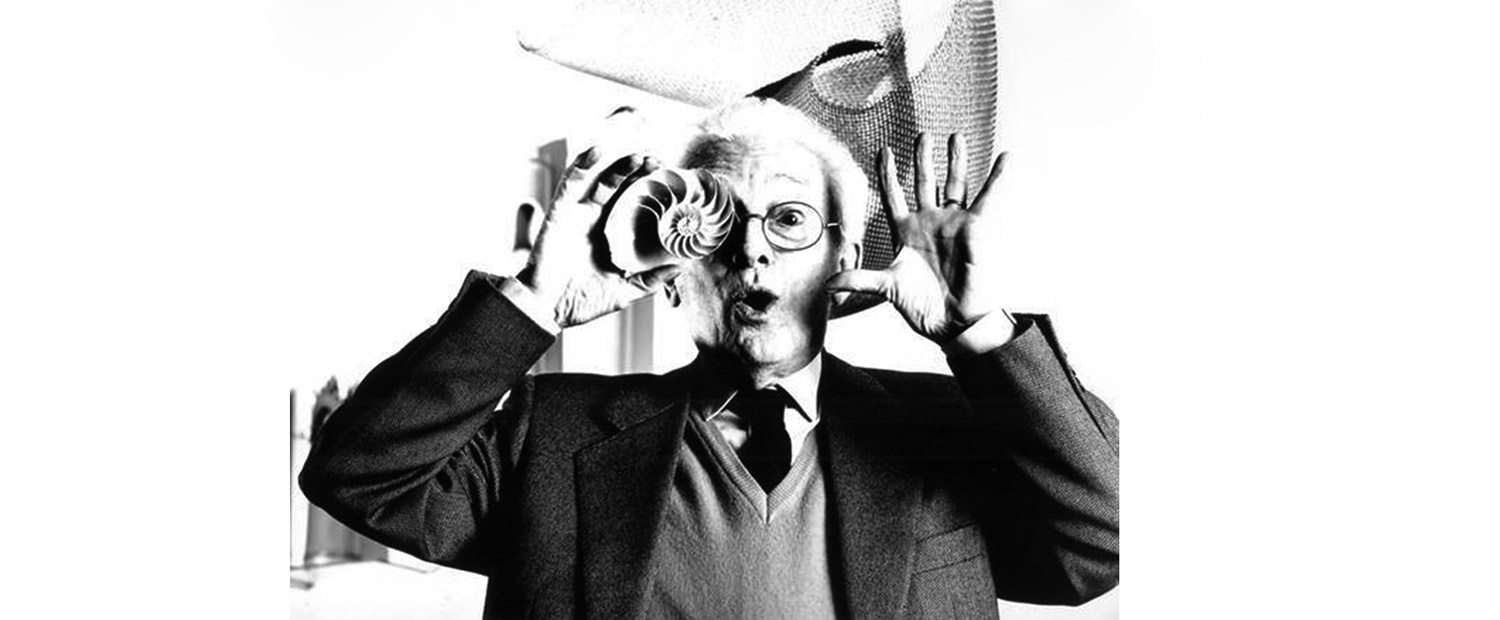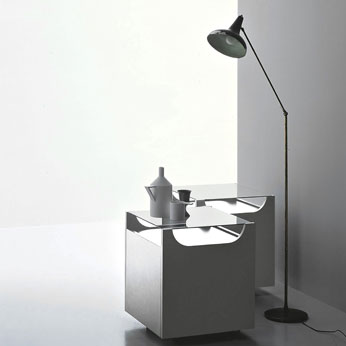Bruno Munari (Milan, October 24, 1907 - Milan, 30 September 1998) was an Italian artist and designer.
Not everyone knows that… the meeting between Porro and Bruno Munari dates back to 1966, on the occasion of a cycle of lectures held by the Milanese master at the Art School in Cantù: an immediate affinity, arising from sensibility, character and design attitudes that were in many ways common to both, prompted the company to approach the designer to give its brand a modern guise. The result is simple, intuitive and clever: the two letter “O”s contained in the word Porro become two screws seen from above, containing the company’s own most representative instrument of work in the symbol of a company all about the transformation of wood.
And again from Munari came the decision to publish this logo in very small dimensions, mirroring the timidity and discretion - in life as in work - of the Porro family, which the designer wanted to respect and tell of indirectly.
The second exchange with Munari took place in the 1990s, when the company, on the occasion of a retrospective on the artist in Cantù, created the first prototype of Cubovo, a trolley with lacquered wood and plate glass structure designed in 1962, it never entered production. An object with a strongly characterised design, with its compact form with 4 folding openings, which Porro has decided to re-issue in 2008.
It was one of the greatest protagonists of art, design and graphics of the XXth Century, giving outstanding contributions in various fields of visual expression (painting, sculpture, film, industrial design, graphics) and non-visual (writing, poetry, teaching ) with a multifaceted research on the theme of the play, childhood and creativity. Bruno Munari is among the Italian most important Leonardesque figures of the XXth Century.
Together with the spatial Lucio Fontana, Bruno Munari dominates the Milanese scene of the ’50s and ’60s, the years of the economic boom afferming the new figure of the artist - visual operator who becomes a business consultant actively contributing to the Italian post-war industrial revival.
The young Munari participated to the Futurist movement, from which he takes the distance for a sense of lightness and humor, inventing air machines (1930) and useless machines (1933).
In the late ‘40s he founded the MAC (Concrete Art Movement) that served as a coalition of Italian abstractionist instances giving rise to a synthesis of the arts, capable of combining the traditional painting with the new communication tools being able to demonstrate to the industry the opportunity to a convergence between art and technique.
Despite being considered one of the main protagonists of the programmed and kinetic art, he escapes from every definition and cataloguing due to the multiplicity of its activities and his great and intense creativity.


